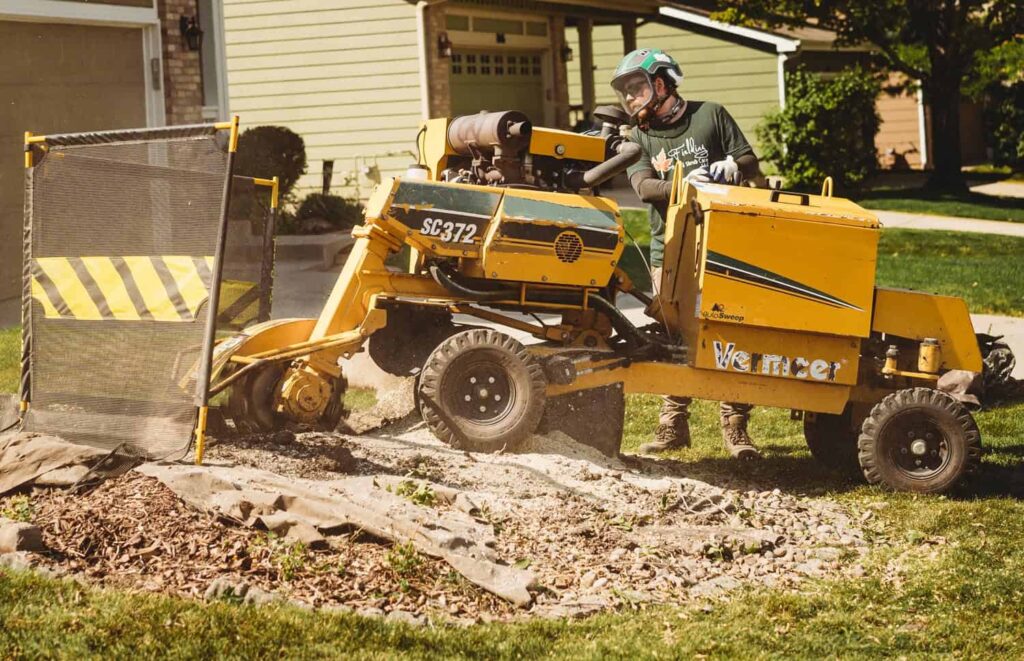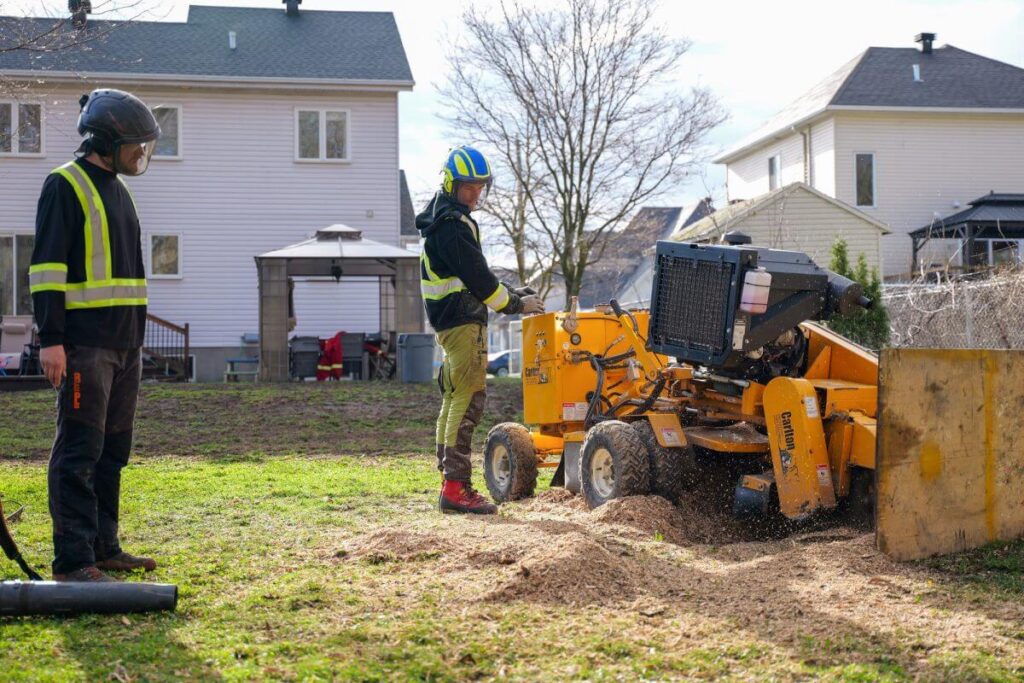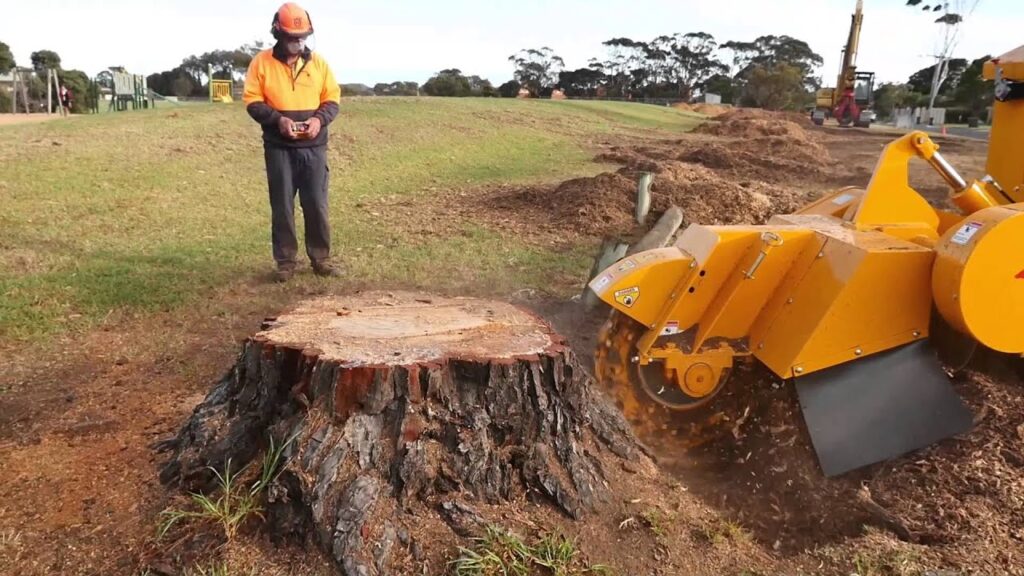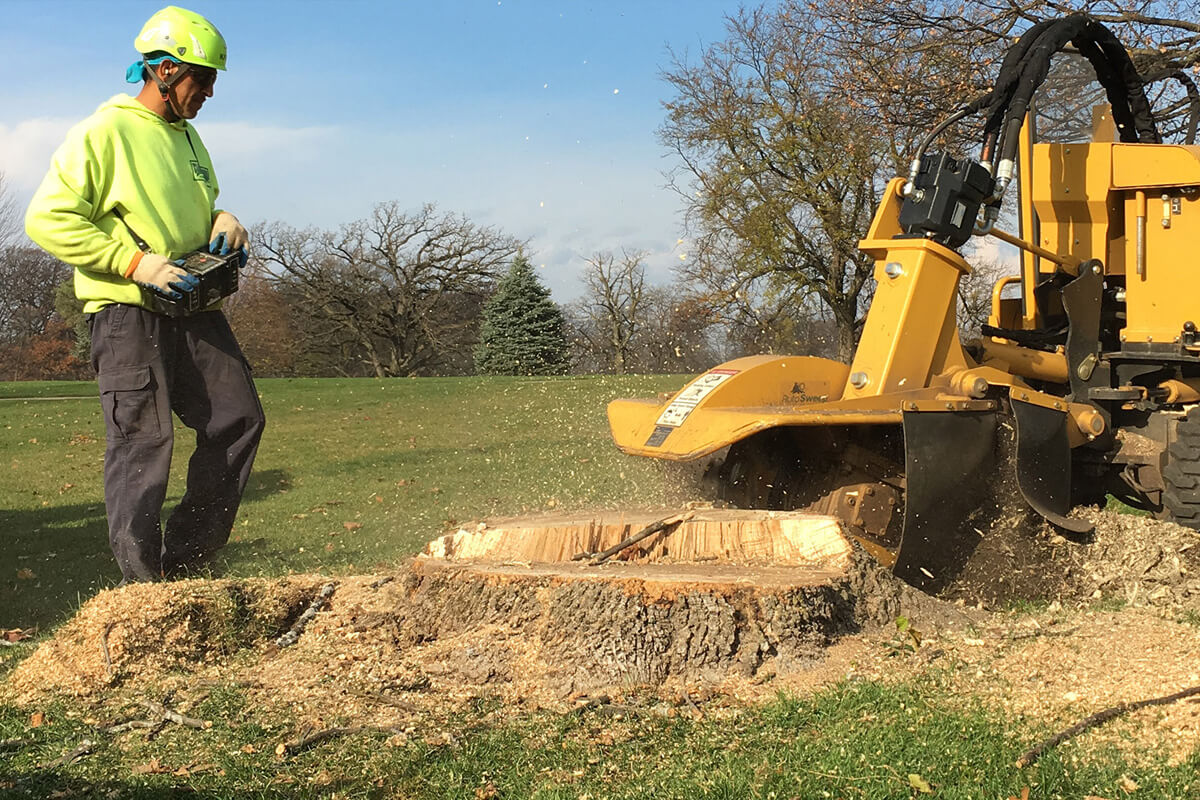Understanding the need for tree stump grinding
Tree stump grinding is an essential process that often follows tree removal, yet many homeowners overlook its importance. Once a tree is cut down, the remnants—a stubborn stump—can pose various challenges. Addressing these issues through grinding can save time and effort in the long run.
Moreover, tree stumps can create obstacles in your garden, making mowing difficult or preventing you from designing your landscape the way you envision it. By grinding tree stump, you’re not only regaining valuable space but also enhancing the overall aesthetic of your outdoor area.
The environmental impact of leaving tree stumps
Leaving tree stumps in your garden can lead to unwanted ecological effects. Decaying stumps can attract pests, such as termites and carpenter ants, which may eventually find their way into your home. Additionally, stumps can become a breeding ground for various fungi, posing a risk to surrounding plants.
On the other hand, grinding a stump allows it to decompose more quickly through the grinding process, enabling you to maintain a healthier garden ecosystem. It can even be beneficial for soil health, as the chipped wood can serve as mulch, returning nutrients to the earth.

Safety concerns related to tree stumps
Another compelling reason for stump grinding is safety. A protruding stump can be a tripping hazard, particularly for children or elderly individuals. In areas where people frequently walk or play, this becomes a significant concern. By eliminating the stump, you create a safer environment for everyone.
In addition, tree stumps can become slippery when wet, further increasing the risk of slips or falls. Thus, opting for tree stump grinding is a proactive step towards enhancing safety in your outdoor space.
The basic principles of tree stump grinding
Understanding the principles behind tree stump grinding can demystify the process, allowing homeowners to grasp how it can benefit their properties. Essentially, stump grinding involves the use of a specialised piece of equipment designed to reduce a tree stump to ground level.
This process not only removes the visible part of the stump but can also grind down some of the root structure. By eliminating the stump and some roots, you’re paving the way for new growth, whether it’s new planting or landscaping projects.
The role of the stump grinder
The primary tool used in stump grinding is a stump grinder, a machine equipped with sharp, rotating blades designed to chisel away at the wood. This powerful equipment varies in size, from portable models for small stumps to larger, more robust machines capable of tackling bigger jobs.
When operated correctly, the stump grinder will gradually reduce the stump into small wood chips, which can then be disposed of or repurposed. This equipment is typically handled by professionals due to its complexity and the potential hazards associated with its operation.
The science behind wood grinding
There’s a lot more to wood grinding than meets the eye. The process fundamentally involves mechanical principles—specifically cutting and chipping various types of wood. Each tree species has different densities and hardness levels. For instance, hardwoods, such as oak, require more energy to grind compared to softer woods like pine.
The speed and efficiency of the grinding process also depend on the sharpness of the grinder’s blades and the specific technique employed by the operator. Understanding these nuances can help homeowners appreciate the intricacies involved in stump grinding. Learn more when to call a tree doctor in Sydney for your property.
The step-by-step process of grinding a tree stump
Taking on the task of grinding a tree stump involves several key steps. Whether you’re hiring a professional or considering a DIY approach, knowing the process can be invaluable in ensuring a successful outcome.

Preparation before the grinding process
Before initiating work, it’s essential to survey the area around the stump. Remove any debris, rocks, or potential obstacles that could interfere with the grinding process. Safety gear, including goggles and gloves, is a must, even if a professional is handling the equipment.
Additionally, check for any underground utilities in the area. It’s crucial to ensure that grinding won’t hit any gas or electrical lines buried beneath the soil. Many jurisdictions offer utility marking services that can assist in this regard.
The actual grinding process
Once everything is prepared, the grinding can begin. The operator will position the stump grinder over the stump and begin the grinding process, moving it back and forth to grind deep into the wood. This may take some time depending on the stump’s size and density.
As the stump is ground down, the operator will periodically check the depth, ensuring that it’s ground low enough to allow for future landscaping or planting. Typically, the aim is to grind the stump 10 to 15 cm below ground level.
Post-grinding cleanup and disposal
After the stump has been ground down, there’s a cleanup process that follows. The wood chips created during grinding can be a significant amount, so it’s important to decide how to deal with them. They can be decomposed in your garden, used as mulch, or even disposed of at a green waste facility.
Clearing the area of any debris will ensure the landscape looks tidy and allows you to plan for the next steps in your garden design.
Factors affecting the grinding process
Several factors can influence the effectiveness and efficiency of stump grinding. Awareness of these can help prepare you for what to expect when tackling this project.

The size and type of the tree stump
The most obvious factor is the size of the stump. Larger stumps will naturally take longer to grind through compared to smaller ones. Furthermore, the species of the tree also plays a vital role; as mentioned earlier, hardwoods are denser and tougher to grind than softer woods.
Understanding these aspects allows you to set realistic expectations regarding timeframes and costs, especially if hiring a professional service.
Soil conditions and their impact on grinding
Soil conditions surrounding the stump can also significantly impact the grinding process. If the soil is too hard or rocky, it can make the grinding more labour-intensive and slow. Alternatively, soft or sandy soil can facilitate a more straightforward grinding operation.
It’s worth noting that moist soil can often be easier to work with, so considering the weather conditions before proceeding can also affect the success of your grinding venture.
The aftermath of stump grinding
After the grinding process is complete, there are additional considerations to keep in mind. What happens to the area once the stump is gone can greatly influence your garden’s future utility.
Dealing with the leftover wood chips
As mentioned, the wood chips produced during grinding can be dealt with in various ways. One popular option includes using the chips as natural mulch to suppress weeds and retain moisture in your garden beds. This recycling not only helps maintain your garden but ensures that the resources from the tree are put to good use.
Another way is to compost the wood chips, which will eventually break down and enrich the soil for future planting. This innovative approach promotes a sustainable way to handle waste material.
Options for the now vacant space
Finally, the vacant space left by the stump opens up numerous possibilities. You could consider landscaping options such as planting new flora or creating a flower bed, thus enhancing your garden’s visual appeal.
Moreover, if you’re seeking functionality, you might choose to install a fire pit, seating area, or even establish a vegetable garden in that space, allowing for creativity and design to flourish.
In summary, understanding the ins and outs of tree stump grinding not only helps in maintaining a safe and aesthetically pleasing garden, but it also promotes an eco-friendly approach to landscaping. Investing time in this process can lead to long-term benefits for your outdoor space.

